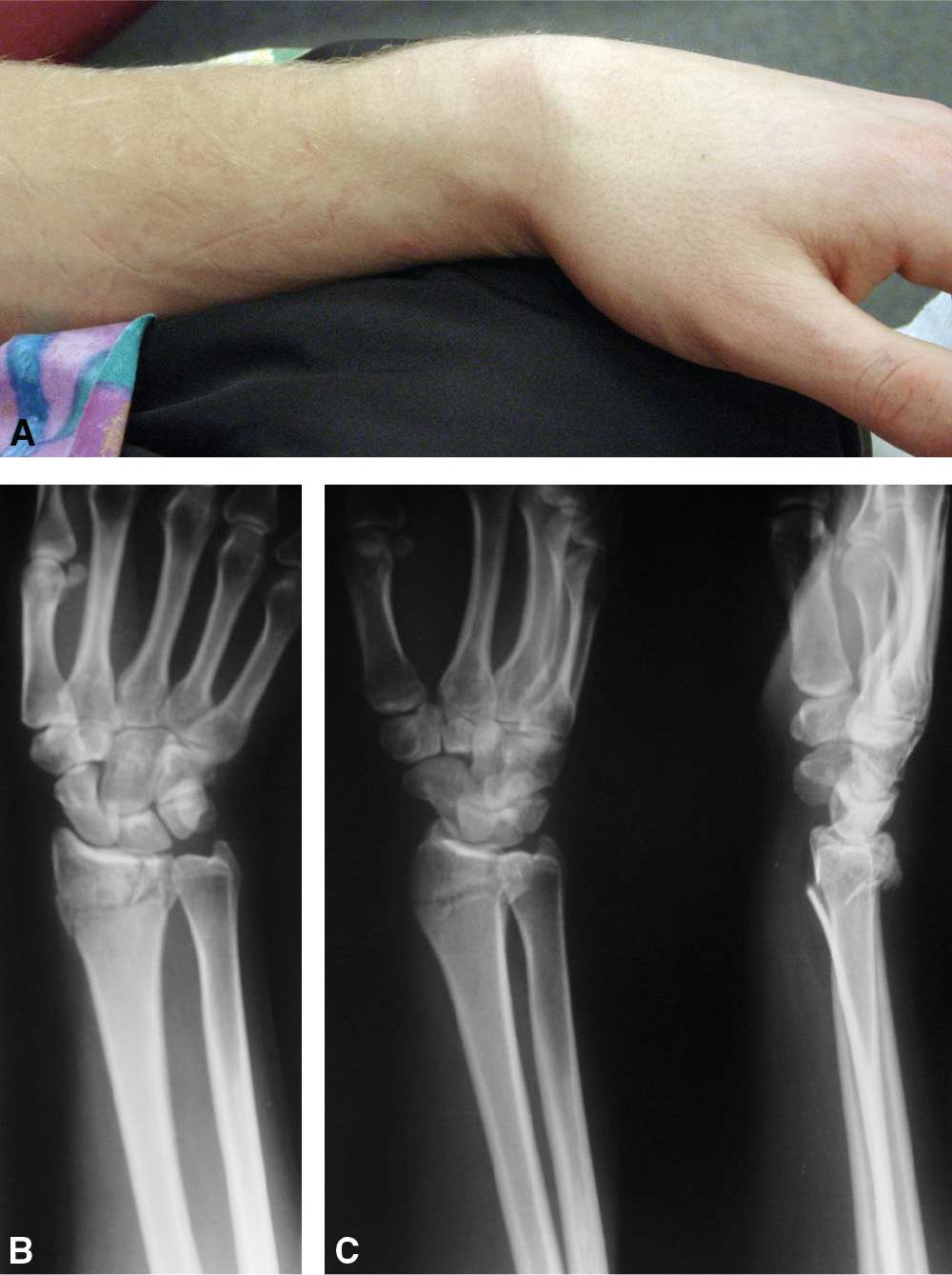
Your initial focus should be on gaining wrist flexion and extension, or bending down and up. These advanced wrist stretches can be started later. These might be motions like when you're pouring a pitcher of water or carrying a bowl of soup. Your physical therapist may also prescribe exercises to work on turning your hand over. Gently add pressure by grasping your hand and bending it further into the position.Flex your wrist down while holding your arm in front of you.Repeat the stretch for five repetitions.Hold the position for five seconds, and then relax.Hold this hand with your non-injured hand, and gently add pressure by pulling your hand and fingers back.Slowly bend your hand and fingers up as if you were signaling for someone to "stop.".To start regaining wrist range of motion: Range of motion is the movement that you can do around the joint. This is normal, and your first exercises after removal of your cast should be geared towards regaining wrist range of motion. This condition may be treated by physical therapists using hot and cold therapy, as well as electrical therapy.After wearing a cast or a splint, you may have noticed that the muscles and joints around your wrist feel tight. This type of injury can cause swelling and pain around the wrist and hand. These are two of the most common signs of ale musculoskeletal injury. These exercises can be performed in the company of a physical therapist, at home, or by yourself. They focus on strengthening the elbow, wrist and hand muscles. There are several exercises that can be done to regain strength. It is another common side effect of Colles fracture. To normalize your range of motion, a physical therapist will help you to do motion exercises for the elbow and hand wrist. You may feel tight in your arms, hands, and shoulders. Your physical therapist will meet with you after the initial evaluation to create a plan that will help you improve your fracture side effects and impairments.Īfter a colle fracture, you will need to wear a cast for between 4 and 6 weeks. A physical therapist examines your arm, wrist, hand and hand functions. Goal is for patient to return to normal activities and discontinue formal. If you have an open reduction, your physical therapist might deal with scar tissue. Begin to wean from splint during the day and continue at night per patient basis. This includes normalizing your range and strength as well as reducing pain and swelling. You may also be referred to a physical therapy to treat some common impairments after Colles fractures. After 4 to 6 weeks, your cast will be removed. Your fracture can be reduced openly or closed depending on what injury it is. Your fracture should be reduced immediately after an injury. Avoid heaw lifting or carrying, opening doors or handshakmg repeatedly. You will make the condltlon worse by continumg the activity that causes the injury, especially if you experience pani. Aperiod ofrest is most important to allow the illJury a Chance to heal. Stable fractures may be casted or splinted until union, followed by a rehabil-itation protocol designed to maximize range of motion and strength. Treatment of the fracture is focused on keeping the bone fragments immobile in an acceptable position until the bones heal. You may have to temporarily stop the aggravating activity. Slowly uncurl the joints of the hand with the affected wrist where your fingers connect to your hand so. Physical Therapy after a Colles’ Fracture With few exceptions, evaluation and treatment of distal radius fractures in athletes follows the treatment principles of all distal radius fractures. MP extension Place your good hand on a table, palm up.


Visible deformity in your arm and lymph-like structure at the wrist.Functional mobility loss of arm and wrist Colles, Barton or Smith Conservative or Surgical Treatment Exercise programmes for wrist fractures must be prescribed.The most common symptoms of collar bone fracture symptoms are Some of the common impairments that your physical therapist may measure and evaluate include range of motion (ROM), strength, pain, and swelling. After about four to six weeks of immobilization, your healthcare provider may remove the cast and you may be referred to physical therapy. Evaluation of a treatment protocol in distal radius fractures: a prospective study in 581 patients using DASH as outcome. Radium fracture symptoms are not complex. Physical Therapy After a Colles' Fracture. In 1814, it was redefined by an Irish surgeon and anatomist, Abraham Colles as a fracture and subsequently was given the name, Colles fracture. This fracture is most common when you fall on your outstretched arm. The radius bone is one of two long bones that run along your arm close to the wrist. This is caused by a fracture of the radius bone in your upper arm.


 0 kommentar(er)
0 kommentar(er)
